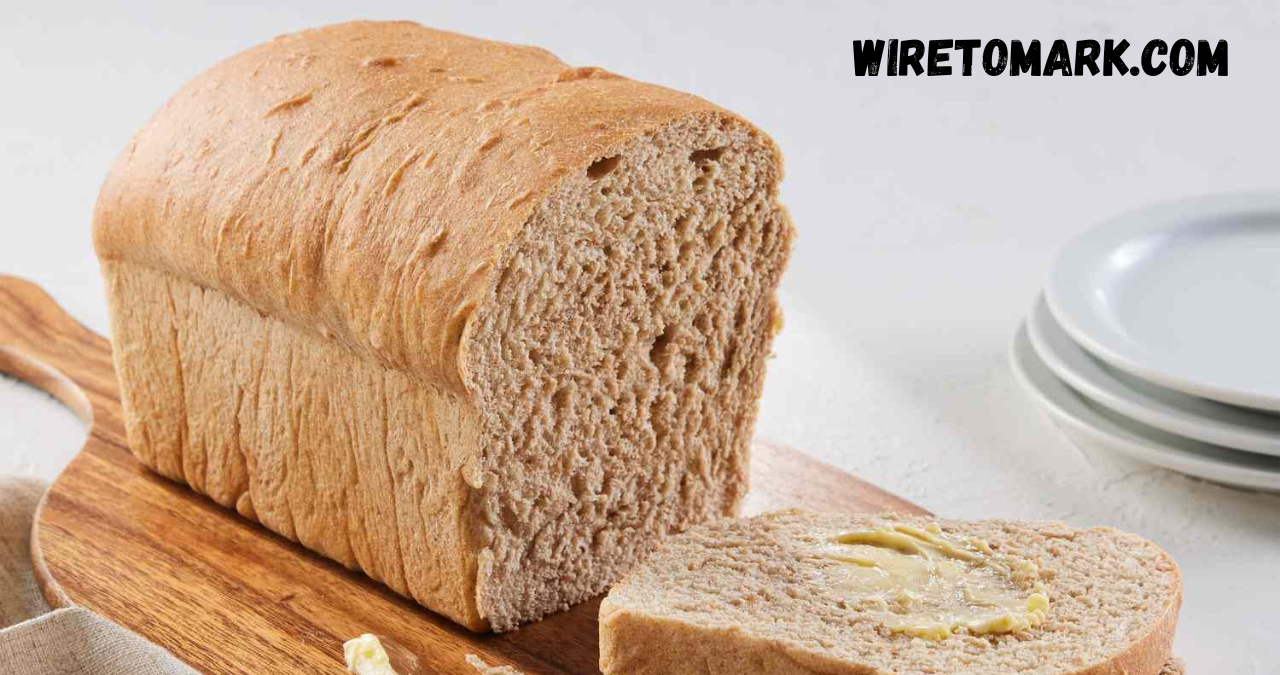If there’s one food that has stood the test of time and taste, it’s whole grain bread. Whether it’s toasted for breakfast, layered into a hearty sandwich, or served alongside soup, this humble loaf has quietly earned its place in kitchens around the world. But beyond its comforting flavor and versatility, there’s a story of nourishment, balance, and mindful eating baked into every slice.
At a time when many people are becoming more conscious about what they eat, whole grain bread has stepped into the spotlight as a smarter, more wholesome alternative to white or refined bread. It’s packed with nutrients, rich in fiber, and beneficial for both gut health and energy levels. Let’s dive into why this bread is more than just a pantry staple—it’s a lifestyle choice worth making.
The Nutritional Power Behind Whole Grain Bread
Whole grain bread is much more than a tasty side dish—it’s a nutritional powerhouse. What makes it “whole grain” is that it contains all three parts of the grain kernel: the bran, germ, and endosperm. This means you get the full range of vitamins, minerals, and fibers naturally present in grains, unlike refined bread where much of this goodness is stripped away during processing.
Each slice offers a rich source of dietary fiber, essential B vitamins, iron, magnesium, and antioxidants. The fiber not only keeps you full longer but also helps regulate your digestion and blood sugar levels. It’s this balanced nutritional profile that makes whole grain bread an excellent option for anyone looking to support their health without giving up flavor or satisfaction.
Another interesting benefit lies in the way whole grain bread affects your energy. The complex carbohydrates it contains release energy slowly, helping you stay fueled and focused throughout the day. Whether you’re hitting the gym, powering through a busy workday, or simply keeping up with your daily routine, it provides a steady source of nourishment that keeps you going strong.
Why Whole Grain Bread Beats White Bread Every Time
When comparing whole grain bread to white bread, the difference is night and day. White bread is made from refined flour, meaning the bran and germ—the most nutritious parts of the grain—are removed during processing. What’s left is mostly starch, which can lead to rapid spikes in blood sugar levels followed by energy crashes.
On the other hand, whole grain bread keeps all the natural goodness intact. The fiber helps slow down digestion, leading to a more gradual release of energy and improved satiety. This makes it a fantastic choice for weight management and for anyone aiming to keep their blood sugar levels steady. It’s no surprise that nutritionists and dietitians consistently recommend making the switch.
Taste-wise, whole grain bread brings more depth and texture to the table. It has a slightly nutty flavor and a hearty bite that pairs beautifully with both sweet and savory toppings. From avocado toast to peanut butter sandwiches, its versatility shines through in every meal. So, while white bread might seem familiar and fluffy, the wholesome richness of whole grain is hard to beat once you’ve made the switch
Whole Grain Bread and Digestive Wellness
Good digestion is the cornerstone of good health, and whole grain bread plays a valuable role in keeping your gut happy. Its high fiber content promotes regular bowel movements and supports the growth of healthy gut bacteria. This not only helps reduce constipation but also enhances nutrient absorption, ensuring your body gets the most from every meal.
But the benefits go deeper than digestion. Studies have shown that diets rich in whole grains can help reduce inflammation in the gut and support a more balanced microbiome. Over time, this can contribute to improved immune function and better overall health. The key is consistency—making whole grain bread a part of your daily meals can create lasting improvements in digestive balance and well-being.
It’s also worth noting that not all breads labeled “wheat” or “multigrain” are truly whole grain. Always check the ingredient list—the first ingredient should read “whole wheat flour” or “whole grain flour.” That’s the real deal. Anything else might be just refined flour dressed up with marketing buzzwords.
How Whole Grain Bread Supports Heart Health
Your heart loves whole grain bread, and for good reason. Whole grains are known to lower levels of bad cholesterol (LDL) while improving levels of good cholesterol (HDL). The fiber in the bread binds to cholesterol in the digestive system, helping remove it from the body before it can enter the bloodstream.
Additionally, the nutrients found in whole grains—like magnesium and potassium—support healthy blood pressure and circulation. Regularly eating whole grain bread has been linked to a reduced risk of heart disease and stroke. It’s a simple, delicious way to make your heart happier and healthier with every bite.
When paired with a balanced diet full of fruits, vegetables, lean proteins, and healthy fats, whole grain bread becomes part of a holistic approach to long-term wellness. It’s not about cutting out carbs—it’s about choosing better ones.
The Perfect Way to Enjoy Whole Grain Bread
There’s no wrong way to enjoy whole grain bread—its versatility makes it perfect for any meal of the day. In the morning, a warm slice topped with nut butter and banana offers a filling, energizing start. For lunch, use it as the base for sandwiches layered with fresh veggies and lean protein. Dinner? Try it alongside soup, salad, or even as a crunchy base for bruschetta.
The beauty of this bread lies in its ability to adapt to any flavor profile. Sweet or savory, light or hearty—it complements them all. You can even use it in recipes like French toast, croutons, or breadcrumbs, giving your dishes a wholesome twist. With so many possibilities, it’s easy to keep your meals interesting while staying healthy.
Choosing the Best Whole Grain Bread at the Store

Not every loaf that claims to be “whole grain” actually is. Many brands use partial whole grains or mix refined flour with coloring to give the illusion of wholesomeness. When shopping, always read the label carefully. The first ingredient should clearly say “whole wheat” or “whole grain.” Avoid loaves that list “enriched wheat flour” or “bleached flour” near the top—those are signs of refined grains.
Another tip is to look for loaves with at least three grams of fiber per slice. The higher the fiber, the more beneficial it will be for your digestion and overall health. Also, watch out for added sugars. Some brands sneak in sweeteners to improve taste, but these can quickly turn a healthy option into a less balanced one.
When in doubt, go for local or artisanal bakeries that bake their bread fresh. You’ll often find simpler ingredient lists, higher quality grains, and a more authentic flavor. The closer your bread is to its natural state, the better it is for your body.
The Role of Whole Grain Bread in Weight Management
Many people shy away from bread when trying to lose weight, but whole grain bread can actually be your ally. Thanks to its high fiber content, it helps you feel full longer, reducing the temptation to snack between meals. The slow-digesting carbohydrates also keep your energy steady, preventing the cravings that often lead to overeating.
In fact, research suggests that people who include whole grains in their diet tend to maintain a healthier weight over time. The key is portion control—stick to one or two slices per meal and pair it with nutrient-rich toppings like avocado, eggs, or turkey. This way, you enjoy a balanced, satisfying meal that supports your goals without feeling deprived.
Common Myths About Whole Grain Bread
Despite its many benefits, whole grain bread often gets caught up in diet myths. One of the biggest misconceptions is that all bread is bad for you. That’s simply not true. Bread made from whole grains provides vital nutrients and fiber that refined varieties lack. It’s not about avoiding bread—it’s about choosing the right one.
Another myth is that whole grain bread tastes too “earthy” or dense. While older versions might have been heavier, today’s varieties are far more refined in both flavor and texture. Bakers have perfected recipes that deliver softness without sacrificing nutrition. Once you find a brand or recipe you love, you’ll never look back at plain white bread again.
Homemade Whole Grain Bread: A Simple Guide
If you enjoy baking, making whole grain bread at home is a rewarding experience. You get complete control over the ingredients, ensuring it’s as wholesome as possible. All you need is whole grain flour, yeast, water, a pinch of salt, and maybe a touch of honey or olive oil for added flavor.
Knead the dough until smooth, let it rise, then bake until golden brown. The smell alone is worth the effort. Plus, you can experiment by adding seeds, oats, or nuts for extra texture and nutrition. Homemade bread also freezes beautifully, so you can make a few loaves at once and enjoy fresh slices anytime.
The Environmental Impact of Whole Grain Choices
Choosing whole grain bread isn’t just good for your health—it’s better for the planet too. Whole grains typically require less processing than refined grains, which means less energy consumption during production. Additionally, many small-scale and organic farms that grow whole grains often use more sustainable agricultural practices.
By opting for whole grain products, you’re supporting a food system that values soil health, biodiversity, and reduced waste. It’s a small, conscious choice that contributes to a larger positive impact—one slice at a time.
Conclusion
In a world filled with fast food and processed snacks, whole grain bread stands out as a simple yet powerful way to nourish your body. It’s rich in nutrients, supports digestion, promotes heart health, and provides steady energy. From breakfast to dinner, it fits effortlessly into every meal while helping you maintain a balanced lifestyle.

